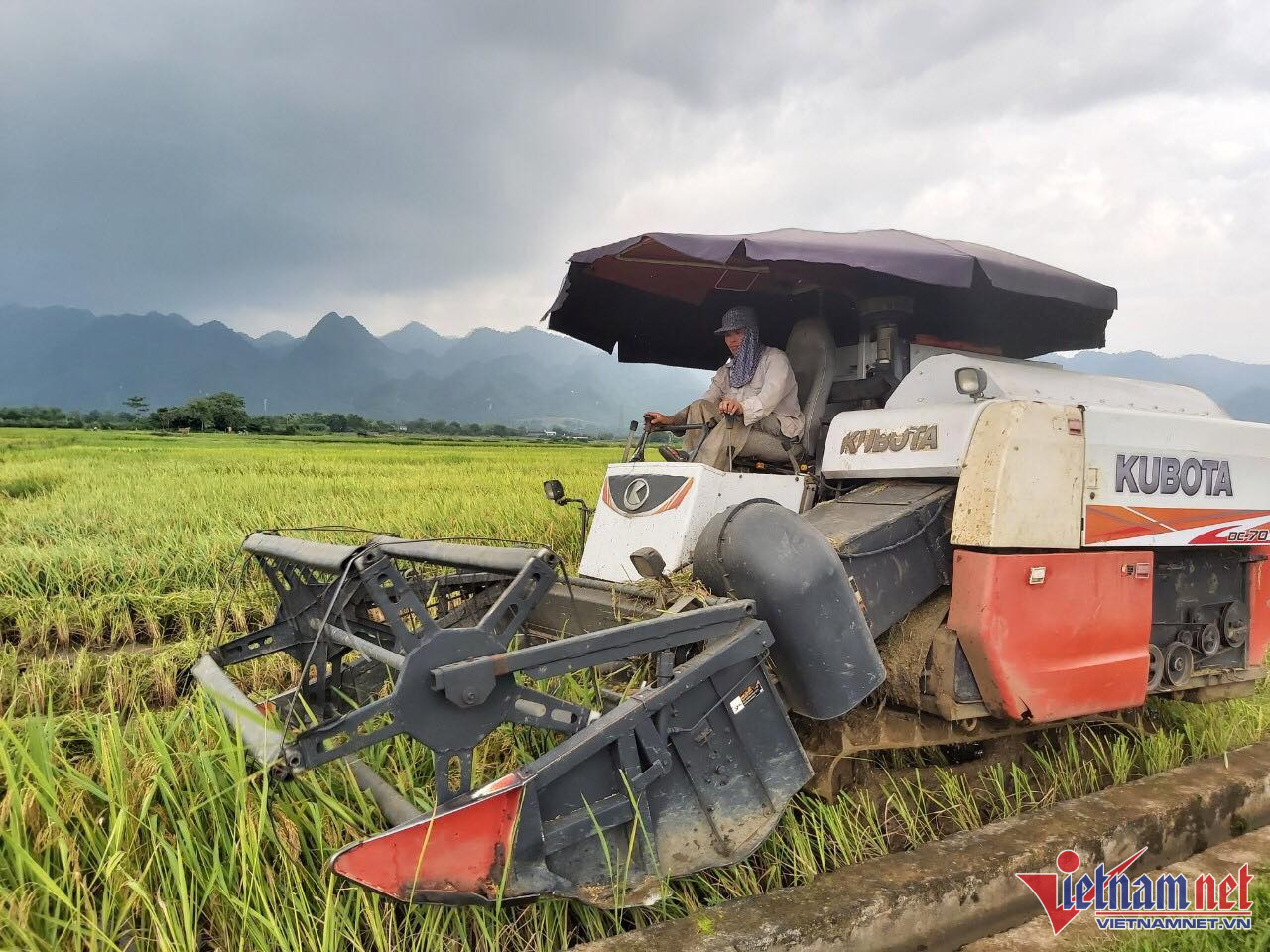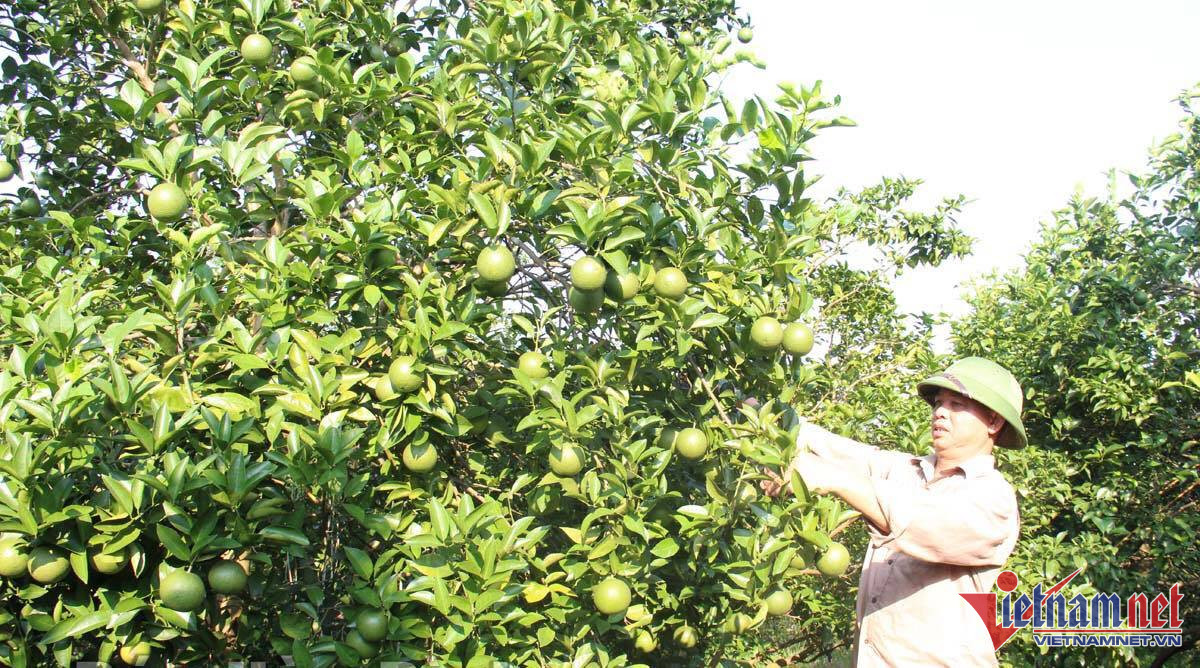Promote high-quality agriculture
The northern province of Hoa Binh has a large area of natural land. Particularly, agricultural land accounts for 14.03% of the total area, playing an important role in ensuring food security, creating jobs for more than 80% of the rural population, contributing to poverty reduction and socio-economic development in the province.

Entering the period of integration, Hoa Binh's agricultural sector has positioned its competitiveness, restructured the industry, and moved towards high-quality clean agriculture, organic agriculture with great added value, and sustainable agriculture.
Hoa Binh is striving to promote green growth to become the center of high-tech agricultural application of the country.
According to the project on agricultural development, promoting product consumption associated with building new rural area in the 2021-2025 period, Hoa Binh identifies agricultural development as the foundation for the modern, safe, effective, economy, closely associated with the processing industry. At the same time, the province will rapidly and comprehensively develop agriculture in the direction of expanding the scale of commodity production, aiming to export and supply raw materials for the processing industry; develop a planning on sustainable specialized production areas associated with ecological environment protection.
To achieve these goals, the province is focusing on developing planting area codes, linking production based on the value chain, and attracting investment in agriculture and rural areas, improve the quantity and quality of key agricultural products from production to consumption. At the same time, Hoa Binh will promote intellectual property protection, build brands for key agricultural products, focus on product promotion and consumption.
The application of high technology to organic agricultural production and consumption of agricultural products has brought about good results in Hoa Binh province.
By the end of 2021, the province granted 14 planting area codes for more than 200 hectares of banana, dragon fruit, longan, Dien pomelo and 7 packing facility codes. Hoa Binh has officially exported 1,326 tons of products to China, Japan and the Europe (Netherlands, Czech, Germany...). its agricultural products such as bananas, tea, bamboo shoots, and sugarcane are provided to many localities throughout the country. This is the result of promoting the application of high technology to agricultural production according to VietGAP and organic processes.
The application of information technology is concretized in management, administration, search for market information, trade promotion etc., specifically in the three areas where smart models are applied: cultivation, animal husbandry, quality management of agriculture, forestry and fishery.
The province has applied models of high-tech agriculture, smart agriculture, organic agriculture, VietGAP standards, new irrigation technology, automatic control and care of plants in greenhouses and net houses, using drones to spray pesticides, and used information technology in traceability of agricultural products.
Luong Son district is a typical example in applying high technology to organic and safe agricultural production, aiming to building a comprehensively developed agricultural industry in the direction of modernity, producing goods with high productivity, quality and competitiveness.
According to the Department of Agriculture and Rural Development of Luong Son district, the total area of organic vegetables in Luong Son is 22.31 hectares, of which more than 12 hectares of vegetables are certified organic with an output of about 80-100 tons/year. These products are wholesaled for about 20,000 VND/kg under contracts signed with partners. In addition, the district has about 13.4 hectares of fruit trees, managed by a local cooperative.
Along with organic production, cooperatives and cooperative groups have actively implemented VietGAP standards in agricultural production in order to ensure food safety, with 119.4 hectares of certified citrus trees, bananas, longans and guava certified to satisfy VietGAP standards. These products along with some livestock products such as chicken, honey bee of Luong Son district are provided to organic food store chains and large supermarkets in Hanoi.
It is expected that by 2023, Luong Son district will implement organic agricultural production on about 22 hectares in the communes of Cao Son, Nhuan Trach, Cu Yen and Lien Son and at the same time have 15.5 ha of safe vegetables meeting VietGAP standards.
Application of high technology in citrus plantation

An orange garden in Phong Phu Commune, Tan Lac District: Photo by Thu Huong.
In recent years, the development of citrus trees in Hoa Binh province has gradually proven its position in agricultural production, contributing to the goal of restructuring the province's agricultural sector. In order to continue affirming the brand of key products from citrus fruit in the direction of safety and sustainability, through the collective economic model, Hoa Binh province is promoting the planning of concentrated production areas, expanding production links and consumption markets.
In recent years, the area of citrus trees in Hoa Binh has increased rapidly, with about 8,0880 hectares at present, of which 3,610 hectares are in the harvest period, with an output of 24 tons per hectare, bringing income of 500-600 million VND per hectare per year.
The area of citrus trees certified for food safety and VietGAP standards is more than 3,000 hectares. Hoa Binh plans to have 10,774 hectares of citrus trees by 2025, and 15,000 hectares by 2030, of which 6,000 hectares are certified to meet food safety conditions, VietGAP, and GlobalGAP standards.
At present, the area of citrus trees of the ethnic minorities is more than 6,200 hectares, of which more than 2,000 hectares have reached food hygiene and safety standards, and VietGAP criteria.
In order to turn citrus into a key organic product, Hoa Binh province will strengthen the application of scientific and technical advances in citrus cultivation, use organic fertilizers and biological products instead of chemical products; expand the area of application of integrated pest management programs and safe production areas according to VietGAP and GlobalGAP standards;
Strengthen state management in the supply of plant seeds and materials, ensuring that the seedlings are disease-free, meeting the technical standards as prescribed, as well as protecting and developing the brand the local products;
Give priority to the formation of concentrated production areas according to the linkage chain, application of production processes and high technology to improve productivity, quality and efficiency; raise farmers’ awareness in production and business, protection of the brand and use of varieties with clear origin and quality assurance.
According to the Scheme on replanting citrus fruit trees in Hoa Binh province in the period of 2021 - 2025, with a vision to 2030, in the period of 2021 - 2025, Hoa Binh province will focus on replanting orange and tangerine trees on about 1,500 hectares in Cao Phong district.
Among the 9 groups of solutions set by the local authorities, it is important to use disease-free seed sources and research and application of advanced science and technology in citrus production and replanting.
Up to now, about 780 hectares of citrus trees have been planted with other crops to improve soil with a rotation period of 2-4 years.
The Hoa Binh Department of Agriculture and Rural Development has also coordinated with the Plant Protection Institute and relevant agencies to develop technical solutions to improve soil, creating a pest-free land fund for citrus replanting. This solution will soon be evaluated, finalized and widely distributed to localities, establishments and citrus growers.
Quynh Nga